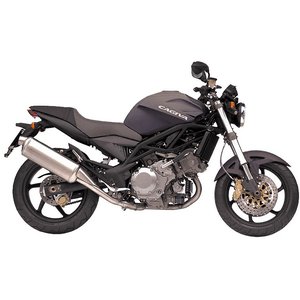Cagiva Raptor 1000 [2000-2005]: The Italian Streetfighter That Deserved More
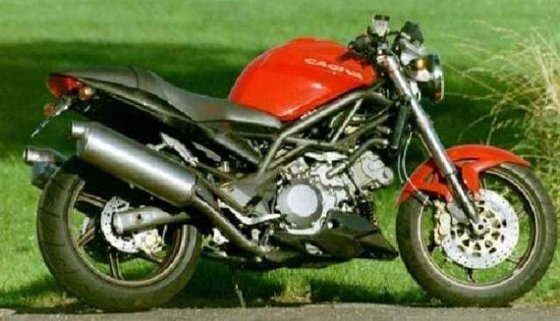
Introduction
The early 2000s were a golden era for motorcycles that combined raw power with avant-garde design. Among the standout models of this period was the Cagiva Raptor 1000, a machine that blended Italian flair with Japanese engineering. Designed by Miguel Angel Galluzzi—the visionary behind Ducati’s iconic Monster—the Raptor 1000 was a streetfighter that promised adrenaline and artistry in equal measure. Yet, despite its brilliance, it remains one of motorcycling’s unsung heroes. This review dives into what made the Raptor 1000 special, how it stacks up against its rivals, and what owners should know to keep this beast roaring.
Riding Experience: A Torque-Driven Thrill Ride
Swing a leg over the Raptor 1000, and the first thing you notice is its aggressive yet accessible stance. With a seat height ranging from 770–805 mm (30.3–31.7 inches), it accommodates riders of varying statures, though taller riders might find the ergonomics slightly cramped. The wide, flat handlebars give a commanding view of the road, while the slightly rear-set pegs position you in a sporty but not overly committed riding posture.
Fire up the 996cc Suzuki-sourced V-twin, and the engine barks to life with a guttural growl from its stubby exhaust. This isn’t a refined purr—it’s a declaration of intent. The Raptor’s party trick is its torque curve, delivering 105 Nm (77.4 lb-ft) as early as 7,000 RPM. From the moment you twist the throttle, the bike surges forward with a relentless push, whether you’re carving through city traffic or attacking a mountain pass.
The power delivery is linear but never docile. Below 4,000 RPM, the engine chugs along lazily, but cross that threshold, and the Raptor transforms. The mid-range is explosive, pulling hard all the way to its 10,300 RPM redline. While its claimed 112 HP (81.8 kW) might seem modest by today’s standards, the Raptor’s lightweight chassis—192–197 kg (423–434 lbs) dry—ensures a power-to-weight ratio that still embarrasses modern nakeds.
Handling is where the Raptor truly shines. The 43mm Marzocchi USD forks and Sachs monoshock (adjustable for preload) strike a balance between compliance and control. On twisty roads, the bike flicks into corners with minimal effort, aided by the Bridgestone Battlax tires (120/70-17 front, 180/55-17 rear). The chassis feels taut, with a 1,440 mm (56.7-inch) wheelbase and 25-degree rake providing stability without sacrificing agility.
Braking is handled by dual 298mm Brembo discs up front and a 220mm rear disc, offering ample stopping power. The initial bite is firm but progressive—ideal for spirited riding.
Design: A Masterclass in Aggressive Minimalism
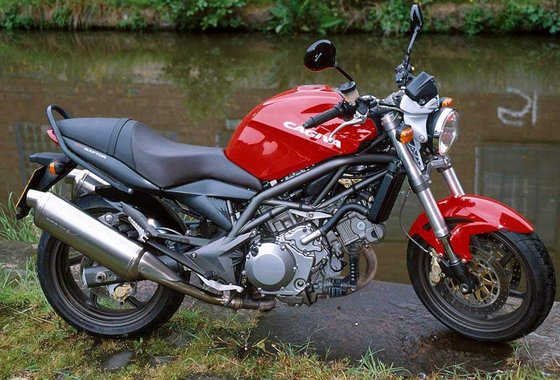
The Raptor 1000’s design is a study in purposeful aggression. Galluzzi’s signature touches are everywhere: the angular fuel tank with faux air intakes, the beak-like headlight fairing (on the V-Raptor variant), and the exposed trellis frame that showcases the engine like a piece of mechanical art.
Details matter here. The triangular tachometer mounted centrally is both quirky and functional, while the laser-cut “Raptor” logos on the frame and exhausts add a touch of exclusivity. The Xtra Raptor’s matte-black finish and carbon fiber accents (side panels, heel guards) elevate it to a stealthy, predatory aesthetic.
Yet, the design isn’t without flaws. The mirrors are comically small, offering minimal rear visibility, and the seat—while stylish—becomes a literal pain after an hour. Practicality takes a backseat to style, but that’s part of the Raptor’s charm.
Performance: More Than Just Numbers
While specs tell part of the story, the Raptor 1000’s real-world performance is where it excels. The liquid-cooled, 90-degree V-twin (borrowed from the Suzuki TL1000) is retuned for street use, with revised fueling and a 16/40 sprocket setup for shorter gearing. The result? A bike that dominates stoplight sprints and devours backroads.
- 0–100 km/h (0–62 mph): ~3.5 seconds
- Top speed: 232 km/h (144 mph)
- Fuel efficiency: 16.6 km/L (39 mpg)
The engine’s flexibility is staggering. You can lug it in sixth gear at 50 km/h (31 mph) or scream it to redline—it’s always ready. The 6-speed transmission is slick, though the clutch can feel heavy in traffic.
Where the Raptor stumbles is aerodynamics. At speeds above 160 km/h (100 mph), windblast turns the rider into a parachute. This isn’t a bike for touring—it’s a urban predator and canyon carver.
Competition: How Does It Stack Up?

The Raptor 1000’s closest rival was the Ducati Monster S4, which shared its designer but not its engine. The Ducati’s 916cc Desmoquattro made similar power but lacked the Raptor’s low-end grunt. However, the Monster’s brand cachet and aftermarket support gave it an edge.
Other competitors included:
- Suzuki TL1000S: The Raptor’s donor bike, but with twitchy handling and a dated design.
- Aprilia Tuono (1st gen): More refined but heavier and less visceral.
- Triumph Speed Triple (955i): A smoother triple-cylinder engine but less character.
The Raptor’s blend of Italian design and Japanese reliability made it unique. It was the “outsider” choice—a bike for riders who valued individuality over conformity.
Maintenance: Keeping the Beast Alive

Owning a Raptor 1000 today requires some dedication. Parts can be scarce, but MOTOPARTS.store stocks critical components:
- Engine: The TL1000 engine is robust, but watch for stator failures. Upgrade to a high-output stator and MOSFET regulator.
- Cooling: Flush the system every 2 years with ethylene glycol coolant.
- Suspension: Replace fork oil with SAE 7.5W fluid and consider a shock upgrade for heavier riders.
- Brakes: Swap pads for EBC HH sintered compounds for better bite.
- Chain: The 106-link chain wears quickly—opt for a DID X-ring chain.
Pro tip: The Raptor’s fuel injection can feel abrupt. A Power Commander or aftermarket air filter smooths throttle response.
Conclusion: A Cult Classic Revisited
The Cagiva Raptor 1000 was a victim of bad timing. Launched just as MV Agusta became Cagiva’s focus, it never received the marketing or development it deserved. Yet, for those in the know, it remains a masterpiece of raw motorcycling—a bike that prioritizes feel over finesse.
Today, the Raptor 1000 is a bargain on the used market. With basic maintenance and a few upgrades from MOTOPARTS.store, it’s a machine that rewards those willing to embrace its quirks. In an era of electronic rider aids and homogenized design, the Raptor is a reminder of when motorcycles had soul.
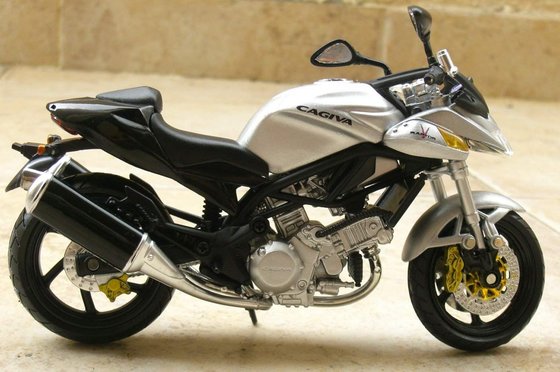
Images courtesy of MOTOPARTS.store archives.


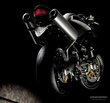

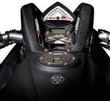

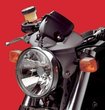



Specifications sheet
| Engine | |
|---|---|
| Stroke: | Four-stroke |
| Max power: | 82 kW | 110.0 hp |
| Max torque: | 105 Nm |
| Fuel system: | Electronic fuel injection |
| Max power @: | 8500 rpm |
| Displacement: | 996 ccm |
| Max torque @: | 7000 rpm |
| Bore x Stroke: | 98.0 x 66.0 mm (3.9 x 2.6 in) |
| Configuration: | V |
| Cooling system: | Liquid |
| Compression ratio: | 11.3:1 |
| Number of cylinders: | 2 |
| Dimensions | |
|---|---|
| Wheelbase: | 1440 mm (56.7 in) |
| Dry weight: | 192 |
| Wet weight: | 210 |
| Seat height: | 770–805 mm (30.3–31.7 in) |
| Ground clearance: | 175 mm (6.9 in) |
| Fuel tank capacity: | 15.2 L (4.0 US gal) |
| Drivetrain | |
|---|---|
| Final drive: | chain |
| Chain length: | 106 |
| Transmission: | 6-speed |
| Rear sprocket: | 40 |
| Front sprocket: | 16 |
| Maintenance | |
|---|---|
| Engine oil: | 10W40 |
| Brake fluid: | DOT 4 |
| Spark plugs: | NGK CR8EK or NGK CR8EIX |
| Spark plug gap: | 0.9 |
| Coolant capacity: | 2.0 |
| Forks oil capacity: | 0.85 |
| Engine oil capacity: | 3.3 |
| Engine oil change interval: | Every 5000 km or 2 years |
| Valve clearance (intake, cold): | 0.10–0.20 mm |
| Valve clearance check interval: | 24,000 km (15,000 mi) |
| Valve clearance (exhaust, cold): | 0.20–0.30 mm |
| Recommended tire pressure (rear): | 2.5 bar (36 psi) solo, 2.7 bar (41 psi) with passenger |
| Recommended tire pressure (front): | 2.3 bar (33 psi) |
| Chassis and Suspension | |
|---|---|
| Frame: | High-strength steel tubular frame |
| Rear tire: | 180/55-17 |
| Front tire: | 120/70-17 |
| Rear brakes: | Single 220mm disc, 2-piston caliper |
| Front brakes: | Dual 298mm discs, 4-piston Brembo calipers |
| Rear suspension: | Rising-rate monoshock, adjustable preload |
| Front suspension: | 43mm USD telescopic fork |



